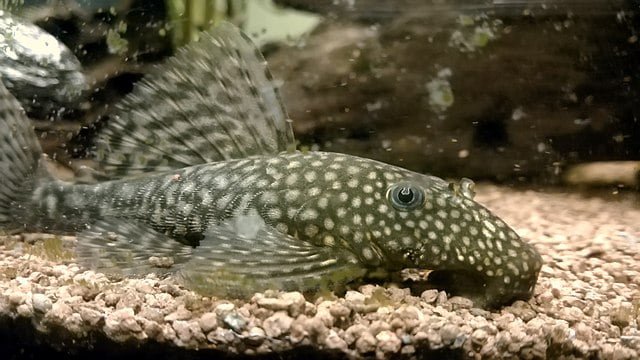by Harrison Tasoff*
Santa Barbara, USA – Fish can drown. While it may not seem like it, fish do require oxygen to breathe; it’s just that they get what they need from the oxygen dissolved in water rather than in the air. Too little oxygen spells trouble for our finned friends, which have to move or else suffer ill effects.
Unfortunately, oxygen concentrations are dropping throughout the oceans. A new study out of UC Santa Barbara and University of South Carolina is the first to document more than a dozen species moving to shallower water in response to low oxygen conditions. The research, published in Global Change Biology, spans 15 years of surveys and measurements. The authors stressed the importance of accounting for the findings in fishery management and conservation, or risk implementing strategies wildly out of step with conditions under the waves.
“This study finds that oxygen is declining at all the depths we surveyed: from 50 meters to 350 meters,” said lead author
Erin Meyer-Gutbrod, “and so fish seem to be moving up to shallower regions to get to an area where the oxygen is relatively higher.” Now an assistant professor at the University of South Carolina, Meyer-Gutbrod started this analysis as a postdoctoral scholar at UC Santa Barbara.
Oxygen concentrations are decreasing for a number of reasons, including changes in ecology, seasons and storms. But perhaps the most significant reason is that warmer water holds less dissolved oxygen.
Fish also tend to breathe easier in shallow water because one of the main sources of dissolved oxygen is atmospheric mixing at the surface. Unfortunately, rising temperatures have accentuated the density differences between cool deep water and warm surface water. This has led the ocean to stratify, keeping oxygen from mixing into the depths.
The team sought to determine how declining oxygen levels influenced fish distribution. Almost every fall from 1995 through 2009, the researchers conducted submersible fish surveys at various depths between Anacapa and Santa Cruz islands in Southern California. They visited three of the area’s rocky reef features: a long series of rills called “Anacapa Passage” at around 50m depth; a seamount called the “Footprint” at around 150m depth and the “Piggy Bank,” another sunken high spot with an average depth around 300m. They identified all fish two meters from the sub and within two meters of the seafloor and estimated their length.
The scientists identified 60 types of fish that were observed frequently enough to include in the analysis, to surprising results. Over the decade and a half, four species shifted deeper while 19 migrated to shallower water. “A third of the species distributions moved shallower over time,” Meyer-Gutbrod said. “I personally think that’s a remarkable result over such a short time period.”
In addition to dissolved oxygen, the team also measured temperature and salinity, which remained relatively constant over the timeframe. And while the habitats they studied only span 10 kilometers, they encompass a large range of depths. The location’s small extent actually helped reduce confounding factors; most of the conditions were constant throughout the surveys except for depth.
Previous studies have looked at the effects of low oxygen on individual fish under a lab setting, but this is the first time such a long-term study has been conducted in the field. “Other scientists have used lab experiments to show that fish don’t like low oxygen water,” Meyer-Gutbrod said, “but what nobody’s ever done is just return to the same location year after year to see if there’s actually a change in the distribution of fish stemming from a change in oxygen over time.”
The consequences of this trend could be severe. “This appears to be verification of a rather frightening hypothesis. Namely, that fishes are being moved out of their optimal habitats,” said co-author Milton Love, a researcher at UC Santa Barbara’s Marine Science Institute. “And the end point of that is that, ultimately, they will be driven out of at least some of their habitats.” Certain species may eventually be pushed to areas where their physiology can’t handle the conditions, he noted.
What’s more, results from other studies suggest that increasing surface temperatures are driving many fish deeper. This means fish habitat could be compressed from the top by heat and from the bottom by oxygen availability. “So now the depth band that they can occupy is getting narrower and narrower through time,” Meyer-Gutbrod said.
An additional concern is how this habitat compression interacts with fishing pressure. This trend could concentrate the fish, making them potentially easier to catch. But increased landings would belie fish stocks that are actually in dire straits.
“If you throw your net in the water and you get a ton of fish — more than you’re used to getting — you may think, ‘Oh, it’s a good year for the fish. Maybe the population is recovering,’” Meyer-Gutbrod said. “But instead, it could be that all the fish are just squished into a tighter area. So you could have fishery regulations changing to increase fish allowances because of this increase in landings.” The result would be catastrophic for the fishing industry and the ecosystems on which it depends.
According to the researchers, this is why it’s crucial that we understand what’s going on, predict how it will play out, and adapt management strategies to incorporate this reality.
“The phenomenon will play out as conditions dictate,” Love said. “But our response to it is within our power.”
Reference (open access):
Meyer-Gutbrod, E., Kui, L., Miller, R., Nishimoto, M., Snook, L., & Love, M. (2021).
Moving on up: Vertical distribution shifts in rocky reef fish species during climate-driven decline in dissolved oxygen from 1995 to 2009. Global Change Biology, 00, 1– 14. https://doi.org/10.1111/gcb.15821
*Source: University of California – Santa Barbara
Editor at the digital magazine AquaHoy. He holds a degree in Aquaculture Biology from the National University of Santa (UNS) and a Master’s degree in Science and Innovation Management from the Polytechnic University of Valencia, with postgraduate diplomas in Business Innovation and Innovation Management. He possesses extensive experience in the aquaculture and fisheries sector, having led the Fisheries Innovation Unit of the National Program for Innovation in Fisheries and Aquaculture (PNIPA). He has served as a senior consultant in technology watch, an innovation project formulator and advisor, and a lecturer at UNS. He is a member of the Peruvian College of Biologists and was recognized by the World Aquaculture Society (WAS) in 2016 for his contribution to aquaculture.




